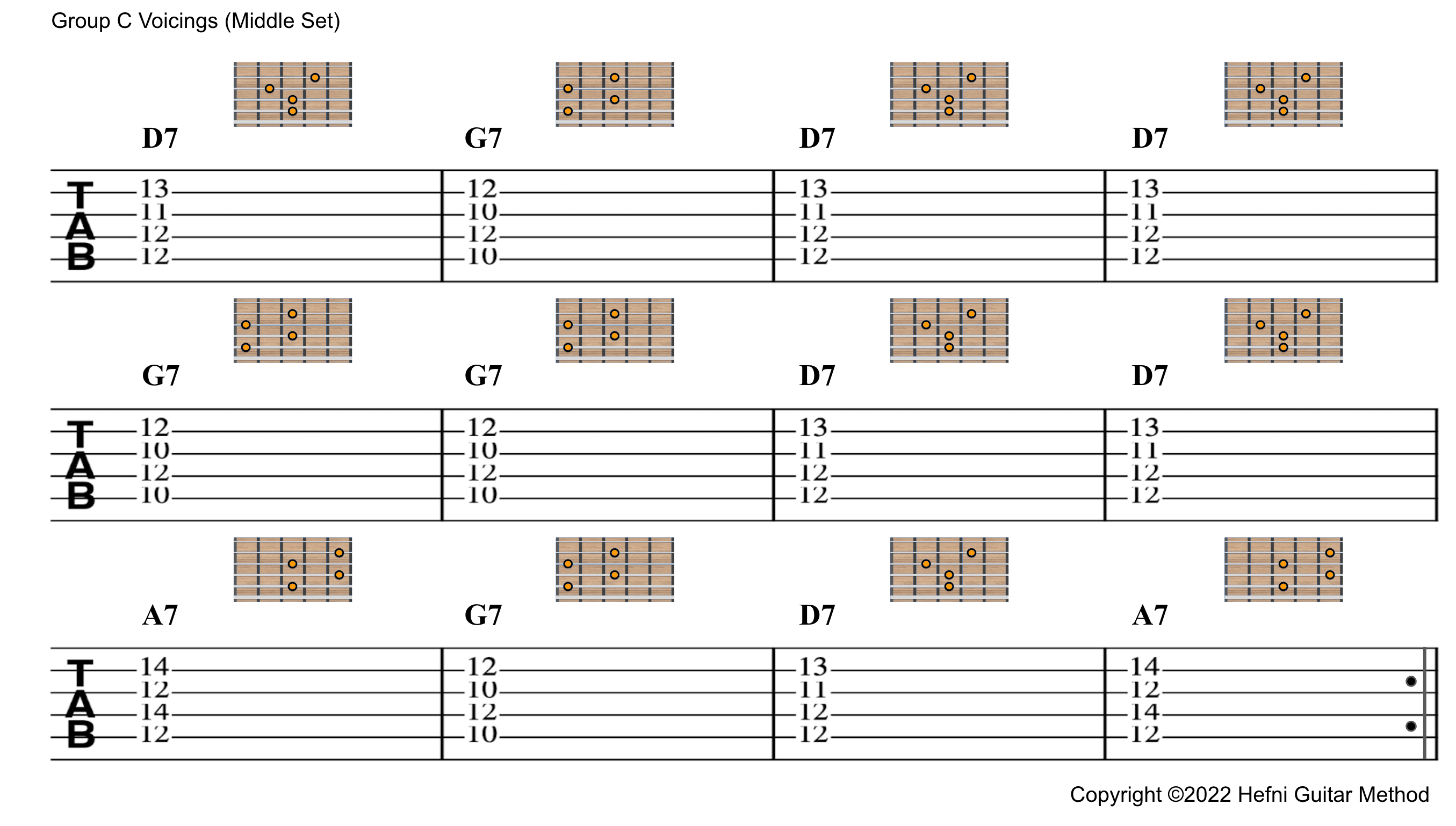Welcome to the Blues Chords Workshop Lesson 3.
In this lesson, we will explore the next group of voicings on the middle strings between the 10th and 14th frets. As before, there are only two chord shapes for the 3 chords in this lesson.
This week’s lesson uses chord shapes which were first introduced in lesson 1 except in a different fret position and in a different order. Therefore you might find this lesson easier since you have already memorised the shapes.
As before, these voicings maintain proper voice leading when changing the chords. Let us call this week’s voicings as Group C Voicings (Blues) middle set.
Click on the video below to watch the lesson.
Learning Aids
The TABs and chord diagrams for the Lesson 3 are presented below.

Primary Takeaways
The main takeaways of lesson 2 are as follows:
1. Exact same chord shapes as Lesson 1 (Group A Voicings)
The chord shape for the I chord in this lesson is that for the IV chord in lesson 1. Hence, this shape should already be familiar to you. Similarly, the IV chord shape in this lesson is that of the I chord in lesson 1. Likewise, changing between the 2 chord shapes should also feel familiar.
2. Voice Leading
Voice leading refers to the smooth transition of chord tones (i.e. voices) from one shape to the next. This may include using different combinations of chord voicings to ensure that the chord tones transition to the nearest adjacent voices. Generally, we want to top note of each chord to jump no farther than a minor 3rd interval (i.e. 3 frets).
3. Common Finger Technique
The common finger techniques of fixed pivot finger(s) and movable pivot finger(s) explained in lesson 2, still applies. Therefore, we should use these techniques when changing chord shapes as they will provide needed stability in the fingering changes. Since these chord shapes are familiar to you since lesson 1, use the same common finger techniques when changing chords. The only difference is that the changes happen in reverse.
Tips for Better Learning
The more we learn, the better we get. Sometimes we can progress by combining what we have learnt in previous lessons. This is called ‘integration’ of knowledge and is a higher form of learning. Nonetheless, integration can be guided as part of the instruction or can be self determined.
Develop Self Motivation
In order to learn better and to learn more, it is important to motivate ourselves to avoid burnout or boredom. Integration of knowledge is one of the best ways to self motivate as it opens new possibilities with the knowledge already acquired.
